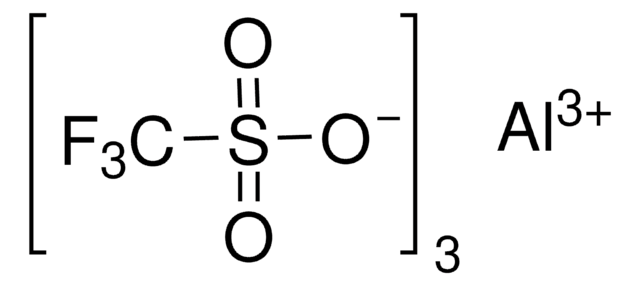587583
Zinc phosphate
99.998% trace metals basis
Synonyme(s) :
Pigment White 32, Trizinc diphosphate, Zinc orthophosphate
Sélectionner une taille de conditionnement
108,00 €
Sélectionner une taille de conditionnement
About This Item
108,00 €
Produits recommandés
Niveau de qualité
Essai
99.998% trace metals basis
Forme
powder and chunks
Pertinence de la réaction
reagent type: catalyst
core: zinc
Impuretés
≤25.0 ppm Trace Metal Analysis
Pf
900 °C (lit.)
Solubilité
H2O: insoluble(lit.)
Densité
4.0 g/mL (lit.)
Chaîne SMILES
[Zn++].[Zn++].[Zn++].[O-]P([O-])([O-])=O.[O-]P([O-])([O-])=O
InChI
1S/2H3O4P.3Zn/c2*1-5(2,3)4;;;/h2*(H3,1,2,3,4);;;/q;;3*+2/p-6
Clé InChI
LRXTYHSAJDENHV-UHFFFAOYSA-H
Vous recherchez des produits similaires ? Visite Guide de comparaison des produits
Mention d'avertissement
Warning
Mentions de danger
Conseils de prudence
Classification des risques
Aquatic Acute 1 - Aquatic Chronic 1
Code de la classe de stockage
11 - Combustible Solids
Classe de danger pour l'eau (WGK)
WGK 2
Point d'éclair (°F)
Not applicable
Point d'éclair (°C)
Not applicable
Équipement de protection individuelle
Eyeshields, Gloves
Faites votre choix parmi les versions les plus récentes :
Certificats d'analyse (COA)
Vous ne trouvez pas la bonne version ?
Si vous avez besoin d'une version particulière, vous pouvez rechercher un certificat spécifique par le numéro de lot.
Déjà en possession de ce produit ?
Retrouvez la documentation relative aux produits que vous avez récemment achetés dans la Bibliothèque de documents.
Les clients ont également consulté
Articles
Colloidal quantum dots (CQDs) are semiconducting crystals of only a few nanometers (ca. 2–12 nm) coated with ligand/surfactant molecules to help prevent agglomeration.
Active Filters
Notre équipe de scientifiques dispose d'une expérience dans tous les secteurs de la recherche, notamment en sciences de la vie, science des matériaux, synthèse chimique, chromatographie, analyse et dans de nombreux autres domaines..
Contacter notre Service technique











